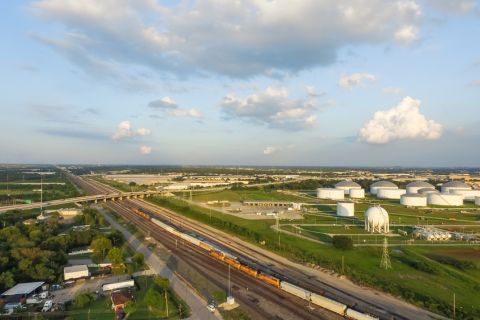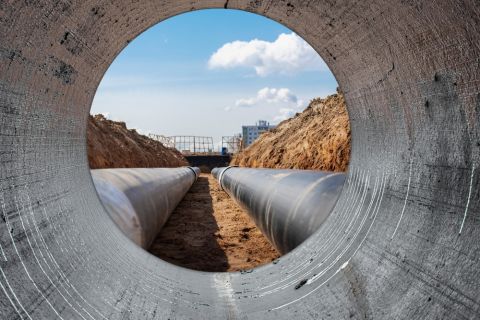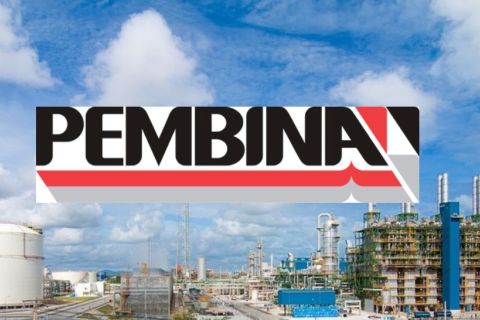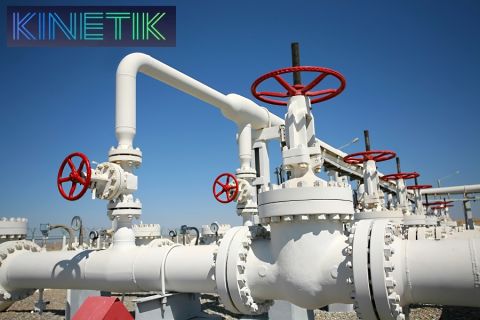This story will appear in the upcoming Hydraulic Fracturing special report presented by:
Automation has played a role in hydraulic fracturing operations for years but now more than ever is becoming essential in helping operators perform efficiently.
While digitalization practices were well-established before the COVID-19 pandemic, social distancing and lockdown requirements have given it a newfound importance. Since pandemic restrictions have begun to ease, most operators have continued to implement more automation systems due to the rising levels of efficiency they observed.
Hesitation around automating hydraulic frac operations stems from the misconception that automated operations equate to the operator relinquishing 100% of the control required to function. While automated services handle a lot of the execution without the help of humans, the human operators still make the decisions behind every action.
Tim Morrish, sales director for data analytics company LYTT, told Hart Energy that automation actually enhances control.
“If you have more information to make a smarter decision, is that not having better control of your process?” Morrish said. “We have this notion that AI [artificial intelligence] is going to make decisions, and this is something that it's not really heavily talked about, but if you do deep dives into AI, what you'll find is that artificial intelligence is still decades away from making actual decisions.”
The benefits of digitalization range from convenience to life saving. While digitalizing operations handles a lot of the day-to-day tasks, allowing engineers to focus on engineering and increasing operational efficiency, it also can reduce the number of people required at a well site, lowering the chance of accidents and increasing safety.
Morrish emphasized that distrust in automation and digitalization is a hindrance to any operator expecting to remain competitive in the marketplace. The number of technologies and software systems being developed and implemented for hydraulic fracturing is accelerating and shows no signs of slowing down. Those who choose not to digitalize their operations to some extent risk falling behind and becoming obsolete.
To showcase some of their digitalization and automation technologies, service provider companies Halliburton, Weatherford and LYTT shared the technologies and services they are implementing to assist operators with hydraulic fracturing automation and outlined the attributes that set them apart from competitors.
Halliburton’s SmartFleet and Zeus
Within Halliburton’s portfolio of well optimization products, two of its systems help enhance hydraulic fracturing for operators through automation and electric fracturing: SmartFleet and Zeus.
Nearly two years after the launch of Halliburton’s SmartFleet system in the Permian Basin, the company is continuing to see the benefits of the intelligent fracturing system’s deployment as automation plays an ongoing role in completions operations.
“This year, there’s a big automation push. It’s being seen in everything,” Shawn Stasiuk, Halliburton’s vice president of the production enhancement product service line, told Hart Energy.
The intelligent frac system allows operators to visualize and control frac operations with intelligent automation and live subsurface measurements, while improving better decision making and consistent operations.
“SmartFleet is a way of automating the pumping operations during [drilling] to improve the downhole frac outcome,” Sriram Srinivasan, senior vice president of global technology at Halliburton, told Hart Energy in an April interview. “So managing, treating pressure better, lowering the treating pressure, for example, of improving uniformity in how you perform—all of this with the aim that all of these things, if you do it right, will improve production in the future.”
In addition to SmartFleet, the company’s electric frac fleet, called Zeus, allows pumping at higher rates while simultaneously lowering carbon emission profiles and increasing wellsite safety. The unit operates consistently with 5,000 units of hydraulic horsepower, performing 30% to 40% higher than competitors, according to the service company.
Other components of Halliburton’s all-electric frac spread include: a dual-manifold trailer that delivers up to 230 bbl/min and allows operators to complete more lateral footage with simul-frac operations compared to traditional zipper frac; the ExpressBlend fluid management system that eliminates failure points and improves completions efficiency; and the eWinch electric wireline system that offers improved safety and reduced footprint.
Although electric frac fleets are not new to the market, service providers such as Halliburton have seen a large increase in their use due to their greater operational efficiency and sustainability, as e-frac operations can now leverage grid power, reciprocating engines and natural gas-powered turbines to run the pumps.
Therefore, the Zeus e-fleet gives operators who want to increase their environmental sustainability a leg up on their competitors. According to data from Halliburton, the e-fracs leave less of an environmental footprint than conventional frac fleets, with 45% fewer emissions when powered by the grid.
“With the increased performance and optimization from these technologies, we are seeing projects where automation and electric converge,” Stasiuk said. “With Zeus, electricity runs the frac spread, so they save fuel and lower emissions at large, while SmartFleet automation optimizes subsurface outcomes like fracture placement.”
“And this is really good for real-time emissions reporting,” which in turn is helpful to investors placing a larger emphasis on transparency in emissions reporting.
The integration of digital and automation cuts a significant amount of time from the learning curve, which Stasiuk called “analysis purgatory,” referring to the time it takes to acquire, interpret and implement data insights, which can take weeks to months. However, with operators able to see and control fracture performance while pumping, the adoption of real-time fracture optimization is moving along at a much more rapid pace.

Weatherford’s ForeSite Sense reservoir monitoring
Real-time reservoir monitoring practices lead to better operational efficiency, as well as increased safety at the well site due to operators being able to assess well and reservoir performance live and make adjustments as needed.
With that in mind, Weatherford wanted to develop a continuous monitoring system that allowed operators to access data to enable them to make quick, effective well decisions.
ForeSite Sense reservoir monitoring provides downhole real-time continuous monitoring that will determine “true reservoir behavior,” according to Weatherford global product line manager Julio Bello. It features an optical flowmeter scalable to any pipe size with a bi-directional flow rate, and distributed fiber optics sensors help with hydraulic fracture profiling, passive seismicity, flow profiling, vertical seismic profiling and wellbore integrity monitoring.
Weatherford applies project evaluation and project assessment to the data integrated system, Bello told Hart Energy.
“We deploy the system—talking about downhole hardware—and innovation to use foresight to deliver real-time data and transfer that data to the process, interpreted by our partners. Then, the final output is delivered back to our client in real-time, and if it’s in real-time, we use the same protocol on our core side, helping our customers with the decision-making process,” he said.
In one case study in Vietnam, Weatherford employed the reservoir monitoring system in an offshore well and installed 16 optical pressure/temperature gauges, replacing spotty electronic gauges and allowing the operator to manage the reservoir based on real-time pressure and temperature data.
With the installation, the operator was able to continuously monitor real-time downhole pressure and temperature. Throughout the three years the system has been in operation, the operator reported zero accidents or failure, according to the service company.
“You can deploy all fiber optics across the well and monitor the main completion downhole,” Bello said. “In Weatherford, we have a series of instruments or global positioning units to collect data.”
The data is transferred to a separate or real-time process unit, he said.
“You can deliver the output in real-time continuous monitoring and allocation [with] production optimization, automation control, in-flow profiling, production forecast and reservoir management,” Bello added.
Weatherford’s partnership with London-based data analytics company LYTT gives the company a better understanding of the data that comes from their fiber optics systems, with LYTT’s Morrish comparing the data company to the engine of the operation.
Ratiba Bouzerna, alliances manager for LYTT, told Hart Energy the agreement is about providing Weatherford a layer of analytics regarding the position of data and acoustic temperature data through fiber, with data streamlined to LYTT’s software to provide insight and actions about wealth, projection optimization in general, and hydraulic factory metering.
The hardware, with a design comparable to a smartphone, features applications focused on solving problems oil and gas producers might encounter in the field, such as production monitoring, well integrity and frac optimization.
“Arguably one of the biggest pain points within the fiber industry over the last 10 years has been the volume of data. A single unit of data would be the equivalent of streaming a thousand Netflix movies every hour for a full day,” Morrish said. “It’s an insane amount of data, and our IP [intellectual property] and our concept of that [hardware] really focuses on taking those obscene amounts of data and bringing them down to manageable sizes that insights can be delivered through.”
Partnering LYTT's analytics and data visualization with Weatherford’s optical sensor reliability and expertise, the companies are able to provide continuous detection and arm the customer with the data required to make important wellsite decisions, Morrish continued.
Fracking future
Industry experts are predicting that the role of fiber optics monitoring in hydraulic fracturing digitalization will increase as it becomes more affordable. Although fiber optics already play an important role, its continued demand is likely to spur cost-innovative solutions so use can be more widespread.
“Fiber optics are getting a lot cheaper,” Stasiuk said. Deploying fiber optics “used to be around $1 million, and now it’s a lot more affordable, and you’re able to take it to scale.”
Additionally, some of the remote features of hydraulic fracturing are expected to remain in place. Kari Bathe, senior marketing manager at ChampionX, told Hart Energy that with all the things that came with the pandemic, the ability to digitally operate helped pull the business sector through the dark times.
“I think the pandemic accelerated [the digital adoption process], and they gained enough trust and value in things like autonomous control where I don’t think we’re going to go backward,” she said.
And even as restrictions are easing, Bathe said she expects continued momentum on that path.
“I think that in that regard, it sort of forced them to take that leap of faith, but now they’ve bought into that concept and have continued down that path,” she said.
Recommended Reading
Midstream Operators See Strong NGL Performance in Q4
2024-02-20 - Export demand drives a record fourth quarter as companies including Enterprise Products Partners, MPLX and Williams look to expand in the NGL market.
Targa Resources Forecasts Rising Profits on 2024 Exports
2024-02-20 - Midstream company Targa Resources reports a record fourth quarter in volumes and NGL fractionation.
Pembina Pipeline Enters Ethane-Supply Agreement, Slow Walks LNG Project
2024-02-26 - Canadian midstream company Pembina Pipeline also said it would hold off on new LNG terminal decision in a fourth quarter earnings call.
Enbridge Sells Off NGL Pipeline, Assets to Pembina for $2.9B
2024-04-01 - With its deal to buy Enbridge’s NGL assets closed, Canada's Pembina Pipeline raised EBITDA guidance for 2024.
Kinetik Holdings Enters Agreement to Pay Debt
2024-04-04 - Kinetik Holdings entered an agreement with PNC Bank to pay down outstanding debt.






